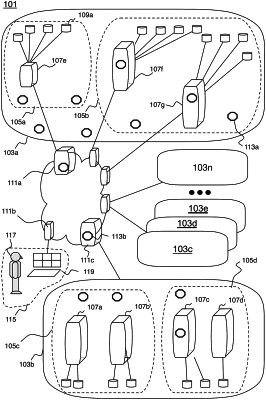| CPC G06F 11/0781 (2013.01) [G06F 11/3006 (2013.01); G06F 11/327 (2013.01)] | 14 Claims |

|
1. A method for managing a plurality of events, wherein each event comprises physical attributes and logical attributes, the method comprising the steps of:
creating tuples, wherein each tuple is an identifier for a set of logical attributes to events having all the same logical attributes;
providing a set of hierarchized relations between tuples, wherein combinations of two tuples form a pair of tuples, by means of an unsupervised machine learning pipeline algorithm, wherein parent-child relations are provided between tuples, by:
creating a plurality of binarized co-occurrence matrices, each co-occurrence matrix reflecting different time intervals, wherein each column corresponds with a tuple and each row corresponds with a time window, so each matrix entry at a tuple column and a time window row represents that at least one event corresponding to the tuple associated with the tuple column appears in each time window associated with the time window row;
successively applying a heuristic function to each matrix entry of said plurality of co-occurrence matrices to obtain a co-occurrence probabilistic score for each pair of tuples, wherein the probabilistic score indicates the probability that one tuple of the pair, referred to as child tuple, co-occurs with the other tuple of the pair, referred to as parent tuple; and
using the probabilistic score of each pair of tuples to quantify the strength of the parent-child relations;
classifying the tuples in families, each family contains all the tuples related according to the parent-child relations provided by the unsupervised machine learning pipeline algorithm;
identifying the parent tuple of each family, defined as a tuple that has at least one child and has no parent;
extracting instance tuples associated with each tuple in each tuple family thereby creating instance families;
presenting the parent tuple instances of each instance family, together with the physical attributes of the events associated to each parent instance tuple each instance family.
|